Charles M. Kozierok The TCP-IP Guide
Подождите немного. Документ загружается.

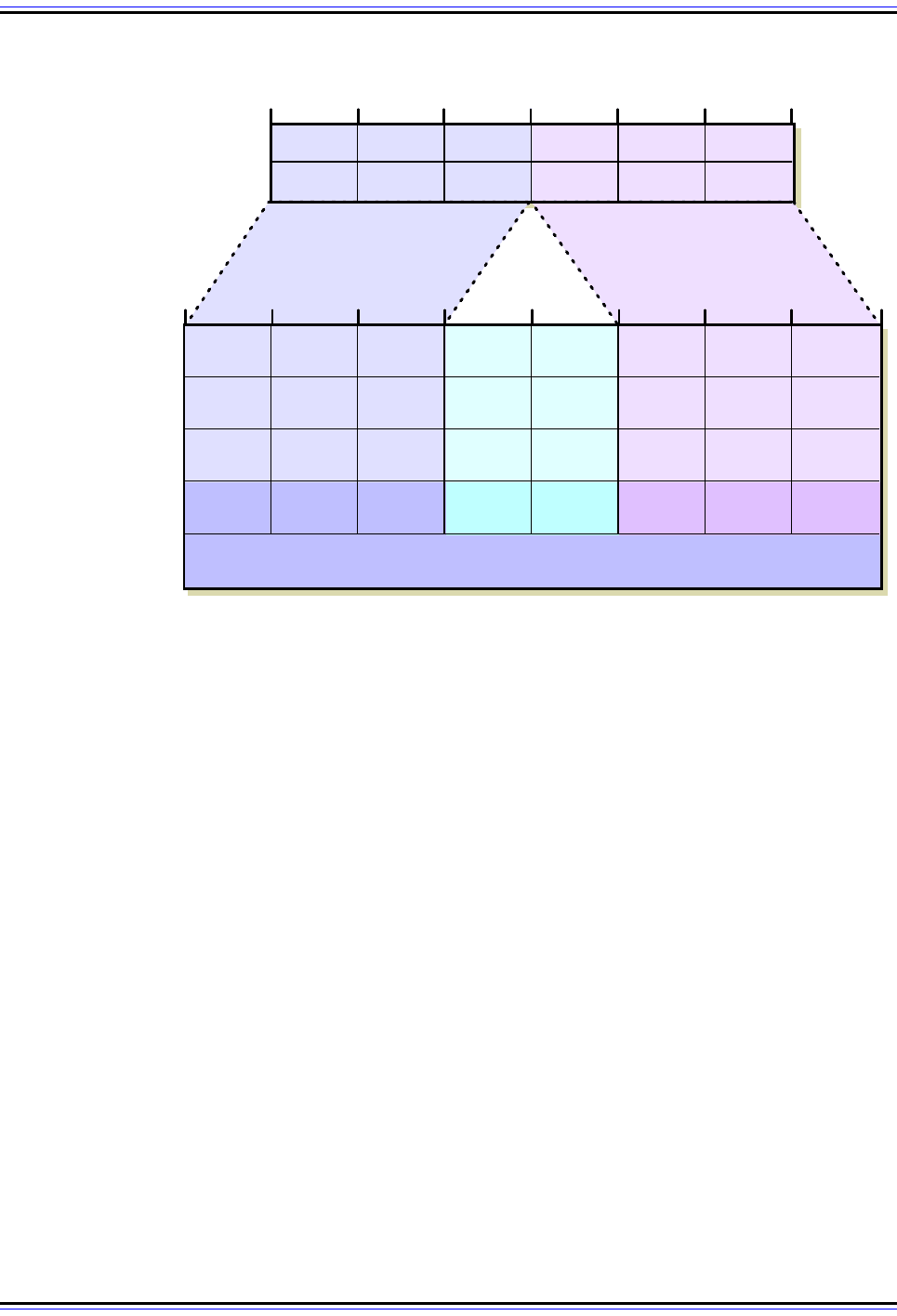
The TCP/IP Guide - Version 3.0 (Contents) ` 481 _ © 2001-2005 Charles M. Kozierok. All Rights Reserved.
IPv6, of course, is that even relatively small pieces of it are still enormous, so setting aside
0.1% of the address space for a particular use still generally yields more addresses than
anyone will ever need.
Special IPv6 Address Types
There are four basic types of "special" IPv6 addresses: reserved, private, loopback and
unspecified.
Reserved Addresses
A portion of the address space is set aside as reserved for various uses by the IETF, both
present and future. Unlike IPv4, which has many small reserved blocks in various locations
in the address space, in IPv6 the reserved block is at the “top” of the address space: the
ones starting with “0000 0000” (or 00 for the first hexadecimal octet). This represents 1/
256th of the total address space. Some of the special addresses below come from this
block. IPv4 address embedding is also done within this reserved address area.
Figure 98: Converting IEEE 802 MAC Addresses To IPv6 Modified EUI-64 Identifiers
80
39 A7 94 07 CB D0
00111001 10100111 10010100 00000111 11001011 11010000
48-bit IEEE
802 MAC
Address
00111001 10100111 10010100 00000111 11001011 11010000
00111001 10100111 10010100 11111111 11111110 00000111 11001011 11010000
00111011 10100111 10010100 11111111 11111110 00000111 11001011 11010000
3B A7 94 FF FE 07 CB D0
3BA7:94FF:FE07:CBD0
16 24 32 40 48
Organizationally Unique
Identifier (OUI)
Device Identifier
64-Bit IPv6 Modified EUI-64 Interface Identifier
1. Split MAC Address
2. A dd "FFFE" Bit Pattern
To Middle 16 Bits
3. Change Bit 7 To "1"
Modified EUI-64 Identifier
In Hexadecimal Notation
IPv6 Identifier In Colon
Hexadecimal Notation
80
16 24 32 40 48 56 64

The TCP/IP Guide - Version 3.0 (Contents) ` 482 _ © 2001-2005 Charles M. Kozierok. All Rights Reserved.
Note: Note that reserved addresses are not the same as unassigned addresses.
The latter term just refers to blocks whose use has not yet been determined.
Private/Unregistered/Nonrouteable Addresses
A block of addresses is set aside for private addresses, just as in IPv4, except that like
everything in IPv6 the private address block in IPv6 is much larger. These private
addresses are local only to a particular link or site and are therefore never routed outside a
particular company's network.
Private addresses are indicated by the address having "1111 1110 1” for the first nine bits.
Thus, private addresses have a first octet value of “FE” in hexadecimal, with the next hex
digit being from “8” to “F”. These addresses are further divided into two types based on their
scope, described below.
Loopback Address
Like IPv4, provision has been made for a special loopback address for testing; datagrams
sent to this address “loop back” to the sending device. However, in IPv6 there is just one
address for this function, not a whole block (which was never needed in the first place,
really!) The loopback address is 0:0:0:0:0:0:0:1, which is normally expressed using zero
compression as “::1”.
Unspecified Address
In IPv4, an IP address of all zeroes has a special meaning; it refers to the host itself, and is
used when a device doesn't know its own address. In IPv6 this concept has been
formalized, and the all-zeroes address (0:0:0:0:0:0:0:0) is named the unspecified address.
It is typically used in the source field of a datagram sent by a device seeking to have its IP
address configured. Zero compression can be applied to this address; since it is all zeroes,
the address becomes just “::”. (I consider this confusing, myself. I think something like “0::0”
is a lot more clear, and short enough.)
Key Concept: In IPv6, a special loopback address, 0:0:0:0:0:0:0:1 (“::1” in
compressed form) is set aside for testing purposes. The unspecified address,
0:0:0:0:0:0:0:0 (“::” in compressed form) is used to indicate an unknown address. A
block of private or local addresses is defined, which is the set of all addresses beginning
with “1111 1110 1” as the first nine bits.

The TCP/IP Guide - Version 3.0 (Contents) ` 483 _ © 2001-2005 Charles M. Kozierok. All Rights Reserved.
IPv6 Private Addresses Types/Scopes
Now, let's take a bit more of a look at private addresses. In IPv6, these are called local-use
addresses, the name conveying clearly what they are for. They are also sometimes called
link-layer addresses. Recall that IPv4 private addresses were commonly used when public
addresses could not be obtained for all devices, sometimes in combination with technol-
ogies like Network Address Translation (NAT). In IPv6, trickery like NAT isn't required.
Instead, local-use addresses are intended for communication that is inherently designed
only to be sent to local devices. For example, neighbor discovery functions using the IPv6
Neighbor Discovery (ND) protocol employ local-use addresses.
The scope of local addresses is obviously a local network, and not the global scope of
public Internet addresses. Local addresses in IPv6 are divided further into two types,
reflecting a further division of local scope.
Site-Local Addresses
These addresses have the scope of an entire site, or organization. They allow addressing
within an organization without need for using a public prefix. Routers will forward datagrams
using site-local addresses within the site, but not outside it to the public Internet.
Site-local addresses are differentiated from link-local addresses by having a tenth bit of “1”
following the nine starting address bits common to all private IPv6 addresses. Thus, they
begin with “1111 1110 11”. In hexadecimal, site-local addresses begin with “FE” and then
“C” to “F” for the third hex digit. So, these addresses start with “FEC”, “FED”, “FEE” or
“FEF”.
Link-Local Addresses
These addresses have a smaller scope than site-local addresses; they refer only to a
particular physical link (physical network). Routers will not forward datagrams using link-
local addresses at all, not even within the organization; they are only for local communi-
cation on a particular physical network segment. They can be used for address
configuration or for the ND functions such as address resolution and neighbor discovery.
Link-local addresses are differentiated from site-local addresses by having a tenth bit of “0”
following the nine initial address bits common to all private IPv6 addresses: “1111 1110 1”.
Thus, site-local addresses begin with “FE” and then “8” to “B” for the third hex digit. So,
these addresses start with “FE8”, “FE9”, “FEA” or “FEB”.
Key Concept: IPv6 site-local addresses allow data to be sent only to the devices
within a site or organization. They begin with “FEC”, “FED”, “FEE” or “FEF” in
hexadecimal. IPv6 link-local addresses are used only on a particular local link
(physical network), typically for special purposes such as address resolution or neighbor
discover. They start with “FE8”, “FE9”, “FEA” or “FEB”.

The TCP/IP Guide - Version 3.0 (Contents) ` 484 _ © 2001-2005 Charles M. Kozierok. All Rights Reserved.
Note that site-local IPv6 addresses are the equivalent of IPv4 private addresses, since they
are routed throughout the organization. The concept of link-local scope is new to IPv6.
IPv6/IPv4 Address Embedding
Due to the importance of the Internet Protocol and the significance of the changes made in
IPv6, deployment of the newer version of the protocol will not occur all at once. A transition
from IPv4 to IPv6 will be required, which requires careful planning. It is anticipated that the
migration from IPv4 to IPv6 will take many years. I discuss this in a special topic dedicated
to IPv4/IPv6 transition issues.
IPv6 is backward compatible with IPv4, provided that special techniques are used. For
example, to enable communication between "islands" of IPv6 devices connected by IPv4
networks, tunneling may be employed. To support IPv4/IPv6 compatibility, a scheme was
developed to allow IPv4 addresses to be embedded within the IPv6 address structure. This
method takes regular IPv4 addresses and puts them in a special IPv6 format so they are
recognized as being IPv4 addresses by certain IPv6 devices.
Since the IPv6 address space is so much bigger than that of IPv4, embedding the latter
within the former is easy; it's like tucking a compact sedan into the hold of a cargo ship. The
embedding address space is part of the reserved address block whose addresses begin
with eight zero bits, but only a relatively small part of it. Two different embedding formats
are used. Both have zeroes for the first 80 bits of the address, and put the embedded IPv4
address into the last 32 bits of the IPv6 address format. They differ on the value of the 16
remaining bits in between (bits 81 to 96, counting from the left):
The two embedding formats are used in order to indicate the capabilities of the device using
the embedded address.
IPv4-Compatible IPv6 Addresses
These are special addresses assigned to IPv6-capable devices, such as so-called “dual
stack” devices that speak both IPv4 and IPv6. They have all zeroes for the middle 16 bits;
thus, they start off with a string of 96 zeroes, followed by the IPv4 address. An example of
such an address, shown in Figure 99, would be 0:0:0:0:0:0:101.45.75.219 in mixed
notation, or more succinctly, ::101.45.75.219.
IPv4-Mapped IPv6 Addresses
These are regular IPv4 addresses that have been mapped into the IPv6 address space,
and are used for devices that are only IPv4-capable. They have a set of 16 ones after the
initial string of 80 zeroes, and then the IPv4 address. So, if an IPv4 device has the address
222.1.41.90, such as the one in Figure 100, it would be represented as
0:0:0:0:0:FFFF:222.1.41.90, or ::FFFF:222.1.41.90.
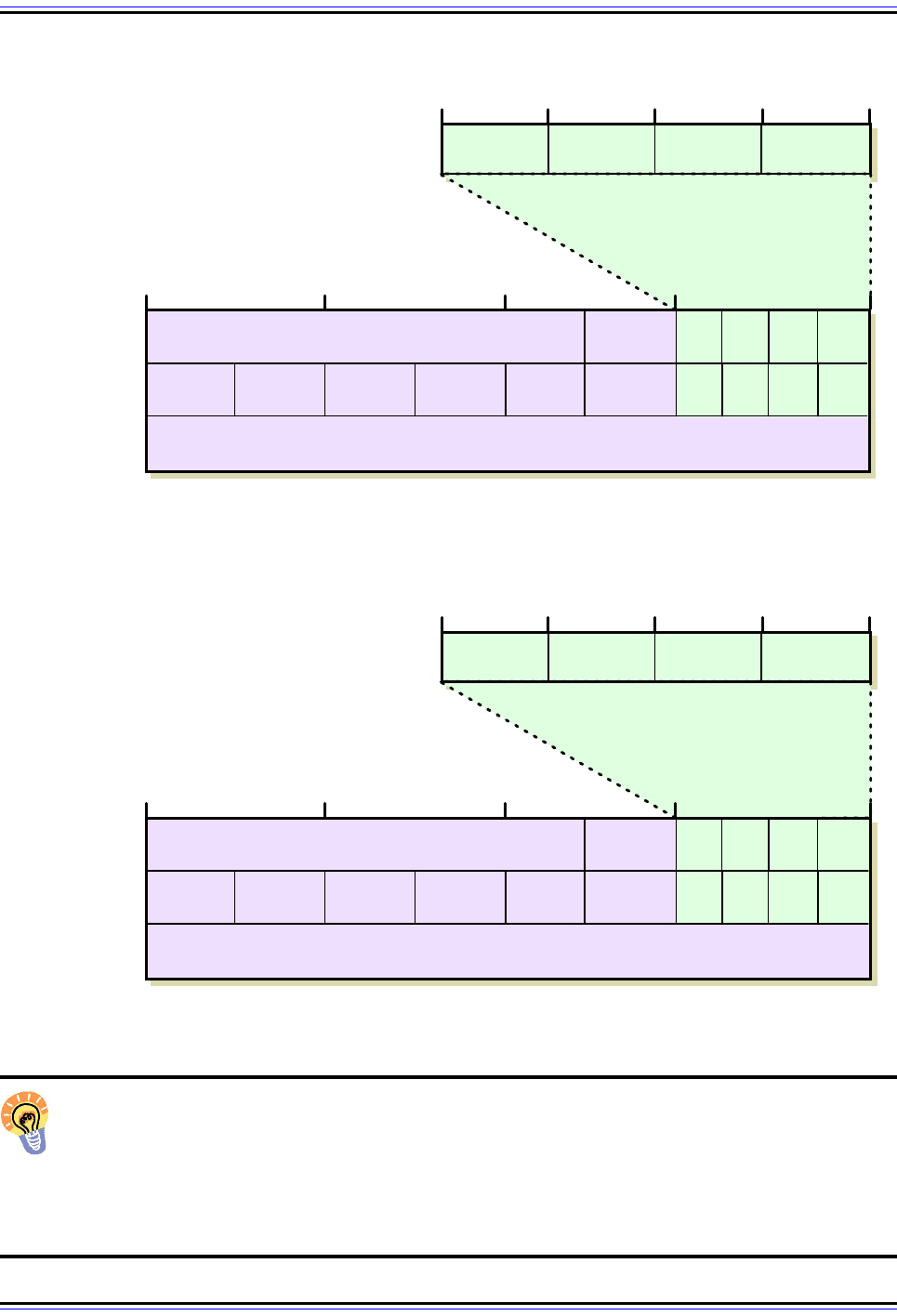
The TCP/IP Guide - Version 3.0 (Contents) ` 485 _ © 2001-2005 Charles M. Kozierok. All Rights Reserved.
Key Concept: IPv4 address embedding is used to create a relationship between an
IPv4 address and an IPv6 address to aid in the transition from IPv4 to IPv6. One
type, the IPv4-compatible IPv6 address, is used for devices that are compatible with
both IPv4 and IPv6; it begins with 96 zero bits. The other, the IPv4-mapped address, is
used for mapping IPv4 devices that are not compatible with IPv6 into the IPv6 address
space; it begins with 80 zeroes followed by 16 ones.
Figure 99: IPv4-Compatible Embedded IPv6 Address Representation
Figure 100: IPv4-Mapped Embedded IPv6 Address Representation
101 45 75 219
8 1624320
32
640
00000000 00000000 00000000 00000000 00000000
00000000 00000000 00000000 00000000 00000000
00000000
00000000
101 45 75 219
0 0 0 0 0 0 101 45 75 219
::101.45.75.219
96 128
32-Bit IPv4 Address
Prefix IPv4 Address
With 80 Zero Bits
IPv6 Address In
Mixed Notation
Compressed
IPv6 Address
222 1 41 90
8 1624320
32
640
00000000 00000000 00000000 00000000 00000000
00000000 00000000 00000000 00000000 00000000
11111111
11111111
222 1 41 90
0 0 0 0 0 FFFF 222 1 41 90
::FFFF:101.45.75.219
96 128
32-Bit IPv4 Address
Prefix IPv4 Address
With 64 Zero Bits
and 16 One Bits
IPv6 Address In
Mixed Notation
Compressed
IPv6 Address

The TCP/IP Guide - Version 3.0 (Contents) ` 486 _ © 2001-2005 Charles M. Kozierok. All Rights Reserved.
Comparing IPv4-Compatible and IPv4-Mapped Embedded IPv6 Addresses
The difference between these two kinds of addresses is subtle, but important. The first 80
bits are always zero, so when this is seen you know it is an embedded IPv4 address of
some sort. IPv4-compatible IPv6 addresses are only used for devices that are actually
IPv6-aware; the IPv4-compatible address is in addition to its conventional IPv6 address. In
contrast, if the "FFFF" is seen for the 16 bits after the initial 80, this designates a conven-
tional IPv4 devices whose IPv4 address has been mapped into the IPv6 format. It is not an
IPv6-capable device.
IPv6 Multicast and Anycast Addressing
One of the most significant modifications in the general addressing model in IPv6 was a
change to the basic types of addresses and how they were used. Unicast addresses are
still the choice for the vast majority of communications as in IPv4, but the “bulk” addressing
methods are different in IPv6. Broadcast as a specific addressing type has been eliminated.
Instead, support for multicast addressing has been expanded and made a required part of
the protocol, and a new type of addressing called anycast has been implemented.
IPv6 Multicast Addresses
Let's start by looking at multicast under IPv6. Multicasting is used to allow a single device to
send a datagram to a group of recipients. IPv4 supported multicast addressing using the
Class D address block in the “classful” addressing scheme. Under IPv6, multicast
addresses are allocated from the multicast block. This is 1/256th of the address space,
consisting of all addresses that begin with “1111 1111”. Thus, any address starting with “FF”
in colon hexadecimal notation is an IPv6 multicast address.
The remaining 120 bits of address space are enough to allow the definition of, well, a
gazillion or three multicast addresses. (Okay, it's officially about 1.3 trillion trillion trillion
addresses.) Much the way the allocation of unicast addresses was organized by using a
special format to divide up these many bits, the same thing was done for multicast
addresses.

The TCP/IP Guide - Version 3.0 (Contents) ` 487 _ © 2001-2005 Charles M. Kozierok. All Rights Reserved.
IPv6 Multicast Address Format
The format for multicast addresses is explained in Table 66 and illustrated in Figure 101.
Multicast Scopes
The notion of explicitly scoping multicast addresses is important. Globally-scoped multicast
addresses must be unique across the entire Internet, but locally-scoped addresses are
unique only within the organization. This provides tremendous flexibility, as every type of
multicast address actually comes in several “versions”: one that multicasts only within a
node, one on the local link (local network), one on the local site and so on. The scope also
allows routers to immediately determine how broadly they should propagate multicast
datagrams, to improve efficiency and eliminate problems with traffic being sent outside the
area for which it is intended. Figure 102 illustrates the notion of scope graphically (and it’s
quite pretty, wouldn’t you say? ☺)
Table 66: IPv6 Multicast Address Format
Field Name
Size
(bits)
Description
(Indicator) 8
The first eight bits are always “1111 1111” to indicate a multicast address.
This used to be called the “Format Prefix” before the term was dropped as
explained in the topic on IPv6 address space allocation; the field now has
no name.
Flags 4
Flags: Four bits are reserved for flags that can be used to indicate the
nature of certain multicast addresses. At the present time the first three of
these are unused and set to zero. The fourth is the “T” (Transient) flag. If
left as zero, this marks the multicast address as a permanently-assigned,
“well-known” multicast address, as we will see below. If set to one, this
means this is a transient multicast address, meaning that it is not perma-
nently assigned.
Scope ID 4
Group ID 112 Group ID: Defines a particular group within each scope level.
S
cope
ID
:
Th
ese
f
our
bit
s are use
d
t
o
d
e
fi
ne
th
e scope o
f
th
e mu
lti
cas
t
address; 16 different values from 0 to 15 are possible. This field allows
multicast addresses to be created that are global to the entire Internet, or
restricted to smaller spheres of influence such as a specific organization,
site or link (see below). The currently defined values (in decimal) are:
Scope ID Value Multicast Address Scope
0 Reserved
1 Node-Local Scope
2 Link-Local Scope
5 Site-Local Scope
8 Organization-Local Scope
14 Global Scope
15 Reserved
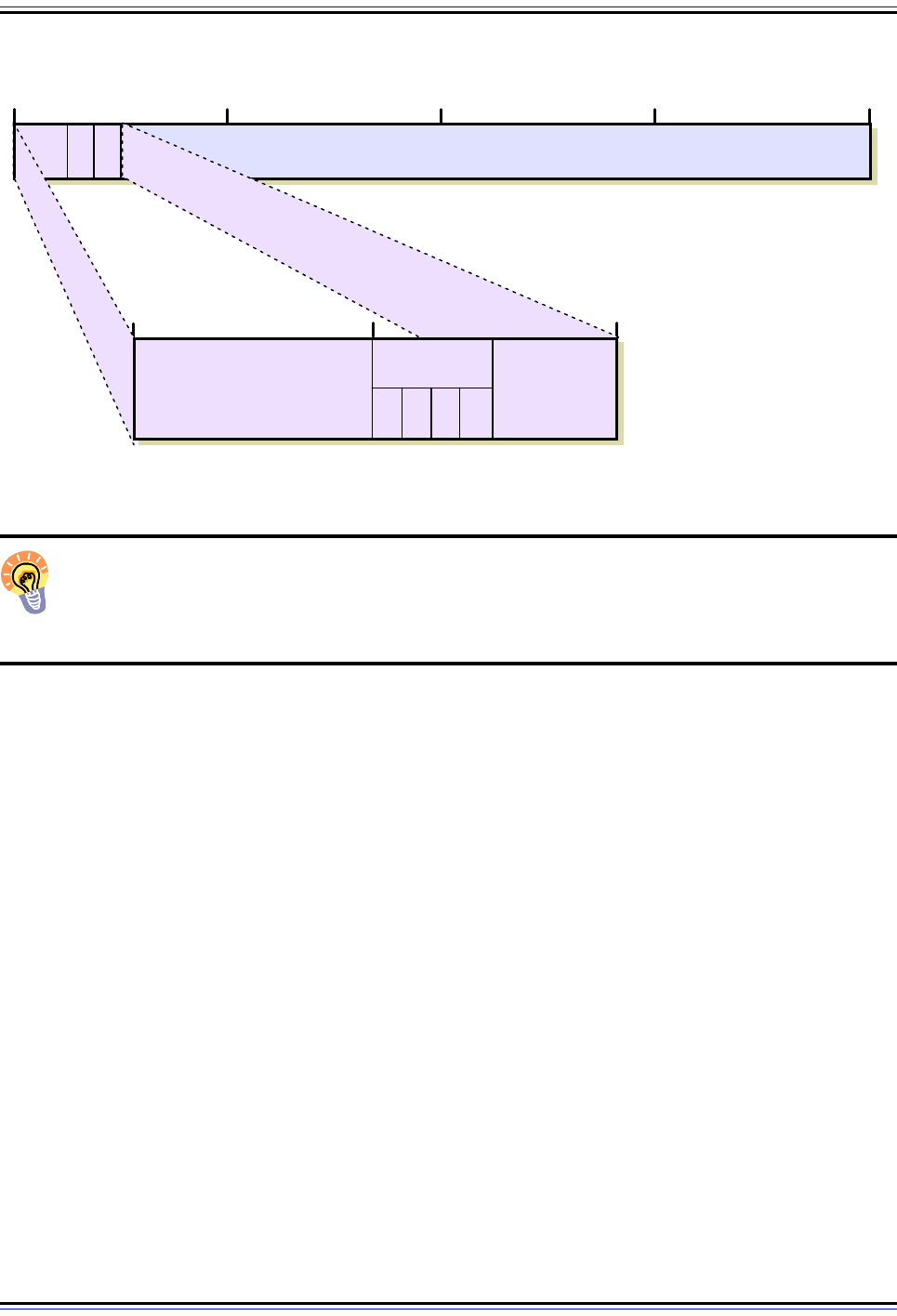
The TCP/IP Guide - Version 3.0 (Contents) ` 488 _ © 2001-2005 Charles M. Kozierok. All Rights Reserved.
Key Concept: Multicast addresses are used to send data to a number of devices on
an internetwork simultaneously. In IPv6 each multicast address can be specified for a
variety of different scopes, allowing a transmission to be targeted to either a wide or
narrow audience of recipient devices.
Well-Known Multicast Addresses
The Transient flag allows for explicit determination of which multicast addresses are
available for normal use compared to which are set aside as “well-known”. Several
predefined well-known multicast addresses are defined, by setting aside certain Group IDs
that are used for a number of different scope ID values. Table 67 shows these values; the
“x” in the multicast address pattern is the hexadecimal digit corresponding to the 4-bit scope
ID field.
The “All Nodes” and “All Routers” multicast addresses enable the equivalent function of
what broadcast used to perform in IPv4. Again, the concept of scope is important in a
multicast of this type because we don't want to try to send a message to “all nodes” on the
Figure 101: IPv6 Multicast Address Format
96
32 64 1280
F S
Multicast Group ID
(112 bits)
16
0
Indicator
(11111111)
Flags
Scope ID
0 0 0 T
1111
1111
8
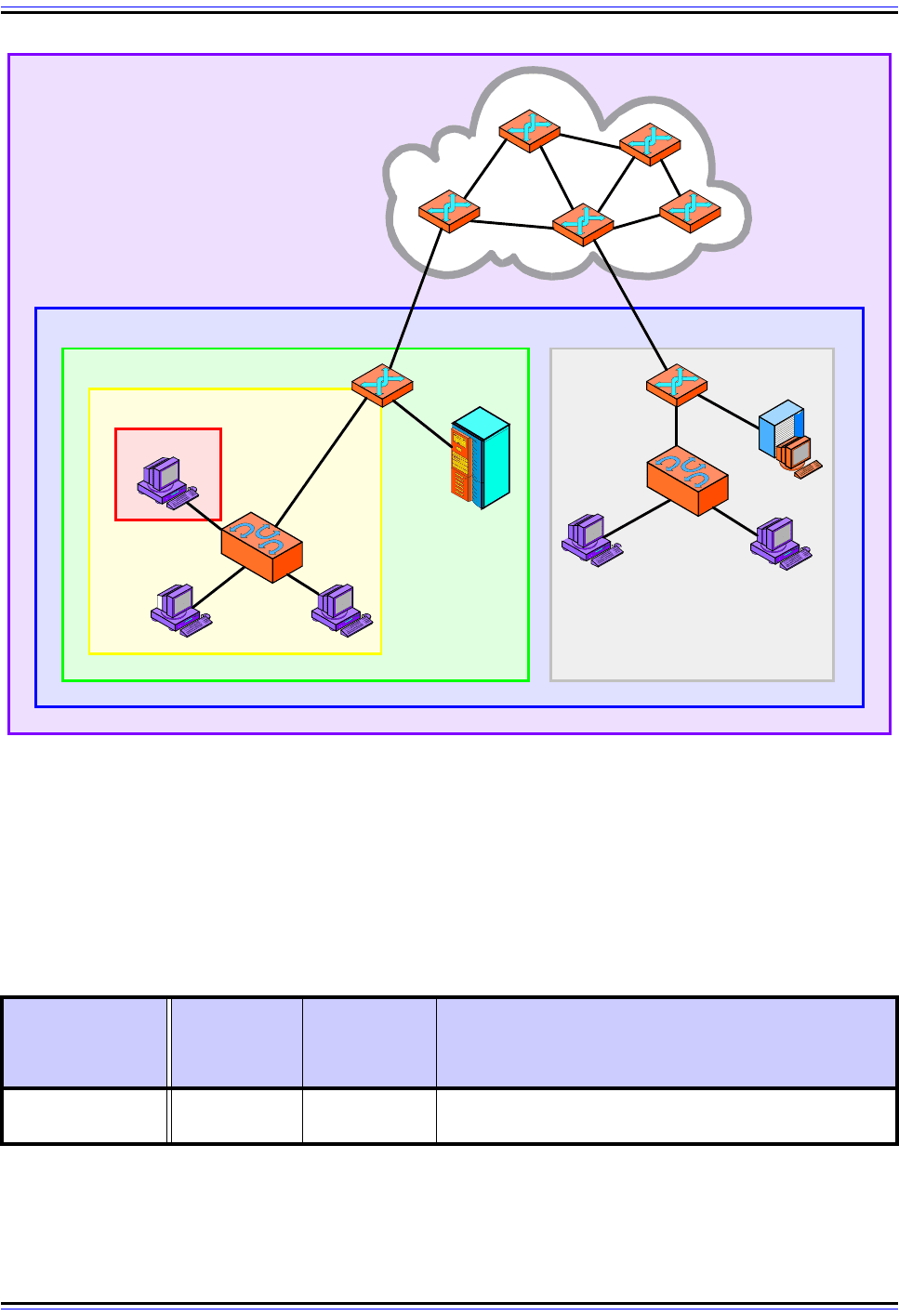
The TCP/IP Guide - Version 3.0 (Contents) ` 489 _ © 2001-2005 Charles M. Kozierok. All Rights Reserved.
global Internet, for example. So, when the “all routers” address is used with a scope value
of 2, it means “all routers on the local link”. If it is used with a value of 5, it means “all routers
in this site”.
Figure 102: IPv6 Multicast Scope
This diagram shows how the notion of scope allows IPv6 multicasts to be limited to specific spheres of
influence. The “tightest” scope is node-local scope, with a Scope ID value of 1. As the Scope ID value
increases, the scope expands to cover the local network, site, organization, and finally, the entire Internet.
Table 67: Important IPv6 “Well-Known” Multicast Addresses (Page 1 of 2)
Multicast
Address
Pattern
Valid Scope
Values
(decimal)
Designation Description
FF0x:0:0:0:0:0:0 0 to 15 Reserved
All multicast addresses where the 112-bit Group ID is
zero are reserved.
Site
#1
Global Scope (14)
Organization-Local Scope (8)
Site-Local Scope (5)
Link-Local Scope (2)
Node-Local Scope (1)
Site
#2
Internet
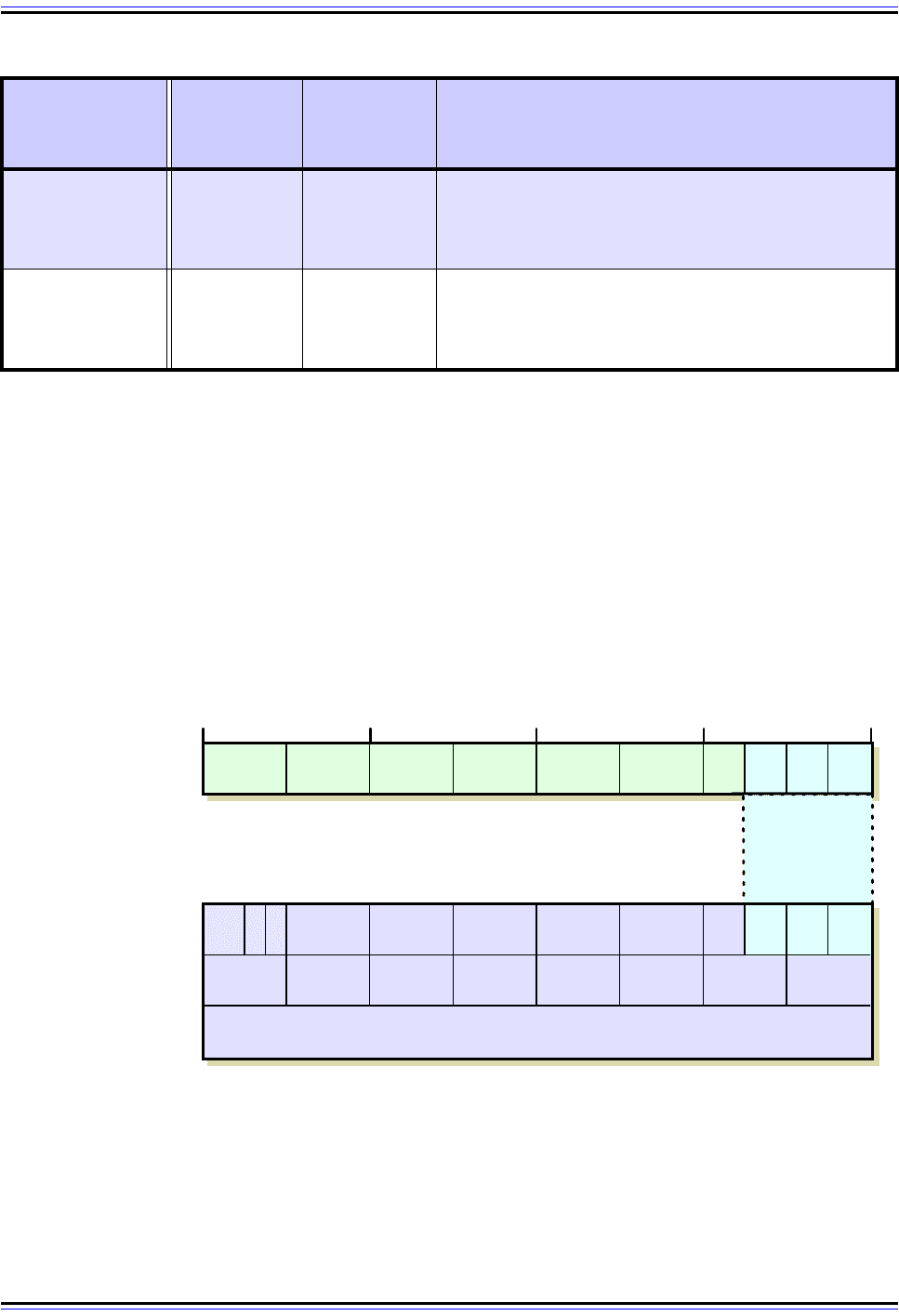
The TCP/IP Guide - Version 3.0 (Contents) ` 490 _ © 2001-2005 Charles M. Kozierok. All Rights Reserved.
Solicited-Node Multicast Addresses
In addition to the regular multicast addresses, each unicast address has a special multicast
address called its solicited-node address. This address is created through a special
mapping from the device’s unicast address. Solicited-node addresses are used by the IPv6
Neighbor Discovery (ND) protocol to provide more efficient address resolution than the ARP
technique used in IPv4.
All solicited-node addresses have their T flag set to zero and a scope ID of 2, so they start
with “FF02”. The 112-bit group ID is broken down as follows (see Figure 103):
FF0x:0:0:0:0:0:1 1, 2 All Nodes
When the Group ID is equal to exactly 1, this is a
multicast to all nodes. Both node-local
(FF01:0:0:0:0:0:1) and link-local (FF02:0:0:0:0:0:1) “all
nodes” multicast addresses are possible.
FF0x:0:0:0:0:0:2 1, 2, 5 All Routers
When the group ID is equal to exactly 2, this desig-
nates all routers within a specific scope as the
recipients. Valid scope values are node-local, link-local
and site-local.
Figure 103: IPv6 Solicited Node Address Calculation
The solicited node multicast address is calculated from a unicast address by taking the last 24 bits of the
address and prepending them with the IPv6 partial address “FF02:0:0:0:0:1:FF”. This shows the example
address from Figure 95 converted to its solicited node address, FF02::1:FFC8:1FFF.
Table 67: Important IPv6 “Well-Known” Multicast Addresses (Page 2 of 2)
Multicast
Address
Pattern
Valid Scope
Values
(decimal)
Designation Description
32
640 96 128
IPv6 Unicast Address
Solicited Node Multicast
Format With Low est 24 Bits
Of Unicast Address
805B 2D9D DC28 0 0 FC57 D4 C8 1F FF
Solicited Node Address
Solicited Node Address
In Colon Hexadecimal
FF 0 2 0000 0000 0000 0000 0001 FF C8 1F FF
FF02 0 0 0 0 1 FFC8 1FFF
FF02::1:FFC8 1FFF
